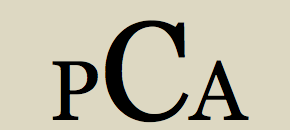Jun 6 2015
– EBMUD’s assigned water use reduction target reflects residents’ conservation patterns –
Every California urban and suburban water district with more than 3,000 customers was given a mandatory water conservation target for its residential customers by the State Water Resources Control Board (Water Board) beginning June 1 and continuing until February, 2016. Based on each California water district’s Residential Gallons Per Capita Day (R-GPCD), the Water Board assigned residential water use reduction requirements, that range from 8% to 36%. In general, industrial and commercial customers are instructed to reduce water consumption by 25%. Local governments’ water use is limited not by targets, but by prohibitions on various uses, such as watering public street medians and outdoor landscapes.
Understanding R- GPCD
In California Residential Gallons Per Capita Day
EBMUD is a large, diverse district –
The East Bay Municipal Utility District (EBMUD), Piedmont’s water district, includes a number of communities with different land use profiles. Piedmont is a single family residential community, while Oakland, Berkeley, Emeryville, San Ramon, Walnut Creek and others have significant commercial and industrial customers. EBMUD’s R- GPCD combines lower water consuming households, such as Piedmont, and higher level water users such as Danville, Lafayette, etc among the 1.3 million residents served in Alameda and Contra Costa counties. As a result, EBMUD was assigned a 16% mandatory reduction. In contrast, a very near neighbor, the Contra Costa Water District has a 28% target, reflecting its higher R-GPCD over some months of the past year.
Water districts must also “produce” (make available) less water in 2015 than they produced in 2013 by their assigned target percentage (16% for EBMUD). However, urban water districts that provide water to commercial agriculture may exclude that water from their monthly reported water production. The Water Board established targets for levels that widen as the reductions increase, based on urban water districts R-GPCD of less than 65 to more than 215 in the summer of 2014.
Target Reduction Levels
Urban water suppliers whose residential customers used an average of less than 65 gallons per person per day in July, August & September, 2014 are required to reduce their use by 8% from June 1, 2015 through February, 2016.
Urban water suppliers whose residential customers used an average of: 65- 80 RGPCD will reduce their use by 12%.
Urban water suppliers whose residential customers used an average of: 80 – 95 RGPCD will reduce their use by 16%. EBMUD’s mandatory reduction
Urban water suppliers whose residential customers used an average of: 95- 110 RGPCD will reduce their use by 20%.
Urban water suppliers whose residential customers used an average of: 110- 130 RGPCD will reduce their use by 24%.
Urban water suppliers whose residential customers used an average of: 130- 170 RGPCD will reduce their use by 28%.
Urban water suppliers whose residential customers used an average of: 170- 215 RGPCD will reduce their use by 32%.
Urban water suppliers whose residential customers used an average of: 215 or more RGPCD will reduce their use by 36%.
Support for Conservation and new Voluntary Restrictions
The Bay Area has generally been supportive of the new restrictions on water use. In April San Jose outlawed home swimming pools and car washing. Santa Cruz imposed a rationing system of 10 units of water a month per house.
Read about Protests of differential treatment
EBMUD Rate Increase Hearing: June 9


